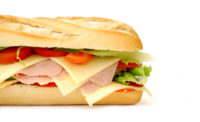The global ready-to-eat (RTE) food products market is expected to expand at a CAGR of 7.2% during the forecast period 2016-2026, and is estimated to be valued at $195.3 billion by the end of 2026, according to a study produced by Future Market Insights, Valley Cottage, N.Y.
The global ready-to-eat food products market is segmented on the basis of product type (meat/poultry, cereal-based, vegetable-based, others), packaging (canned, frozen/chilled, retort, others) and distribution (hypermarket/supermarket, convenience/department store, specialty store, online store, others).
On the basis of product type, the meat/poultry segment is projected to account for the largest value share during the forecast period, accounting for 45.7% value share in 2016. In the packaging category, the frozen/chilled segment is likely to expand at a CAGR of 8% over the forecast period. In the distribution channel category, the hypermarket/supermarket segment is estimated to account for the highest value share of 34.3% in 2016, and is expected to gain significant market share by the end of 2026.
Key market drivers and trends
Increasing population of working women, growing Millennial population, busy work schedules and on-the-go consumption habits are expected to fuel revenue growth of the global RTE food products market. Also, the increase in disposable income and consumer preferences for healthy and convenient foods coupled with the rising demand for snacks and fried food products are expected to further boost the demand for RTE foods.
Globally, the growth of organized retail has led to a widespread supply of RTE food products through a wide distribution network. These factors are expected to bolster the growth of the global RTE food products market in the coming years. However, unhealthy substitutes and low quality and taste along with an increasing shift toward a healthier lifestyle are likely to hinder market growth in the coming years.
Regional market projections
The global RTE food products market is segmented into seven key regions – North America, Latin America, Western Europe, Eastern Europe, Asia Pacific excluding Japan (APEJ), Middle East & Africa (MEA) and Japan. The APEJ market is likely to contribute a high revenue share to the global RTE food products market. APEJ is estimated to hold 18.2% value share in 2016 and this is likely to increase to 20.4% by 2026. Among all regions, North America is estimated to represent the highest value share of 40.1% in 2016 and is expected to register a CAGR of 7.3% during the forecast period. Rise in disposable income coupled with on-the-go lifestyles among the growing population of Asia Pacific, excluding Japan, Latin America and Eastern Europe is expected to drive the growth of the global RTE food products market.
